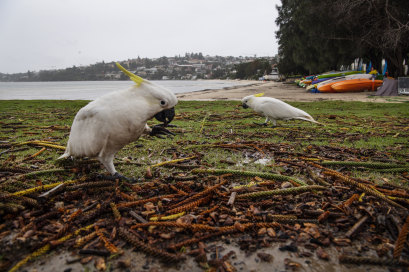- Exclusive
- Environment
- Conservation
- Animals
Licence to kill: Millions of Australian native animals legally slaughtered
By Bianca Hall
Australians took out licences to kill more than 1.2 million native animals and birds last year alone, with kangaroos and wallabies comprising almost half the animals killed.
But the licensing scheme masks the full scale of the legal killing of native wildlife on private land, with the true figure closer to 2 million.
Most native animals are automatically protected under state and territory laws on public land – dingoes being a notable exception – but landholders can apply for licences to kill animals they deem a threat to property.
Analysis of licence applications, some obtained through freedom of information laws, shows Tasmania was the wildlife killing capital of Australia, where 675,640 native animals were killed on private land last year.
Tasmanian licensing laws allow private landholders to apply for licences to kill unlimited numbers of brushtail possums, red-necked wallabies and Tasmanian pademelons. When these figures are included in the number of licences granted last year, the estimated total number of animals killed on private land rose to 1.86 million.
Gaining an accurate portrait of the scale of wildlife deaths in Australia is difficult, however, due to differing licencing regimes across the country. Western Australia is yet to release last year’s figures, while only Tasmania and the ACT release the number of animals killed, rather than the number of licences issued.

Cockatoos are among the most commonly killed native wildlife.Credit: Louise Kennerley
In the past three years, licences were issued for 4.5 million animals to be killed.
Evan Quartermain, head of programs at Humane Society International Australia, said applying for the data on animals slaughtered on private land was a two-year process, which had been slowed by government departments reluctant to disclose the figures.
Its report on the data shows shooting, poisoning (with 1080 and strychnine) and trapping were the main methods of reducing wildlife on private properties.
Last year, the top animals targeted were kangaroos and wallabies (419,120); birds including corellas, cockatoos, lorikeets, swallows, black ducks, grey teals and wood ducks (580,695); wombats (3558) and possums (2050).
Humane Society advocates non-lethal methods of protecting crops and livestock, including fencing and companion animals such as donkeys, alpacas, dogs and llamas, which are used to protect sheep.
“We completely recognise there is an impact on commercial practices from wildlife, but we’re seeing that these justifications for killing are extremely low, with very little apparent interest in doing things a better way,” he said.
“We’ve been killing for hundreds of years as an answer to supposed wildlife conflict, and we really need to change that culture to one of coexistence.”
Victorian Farmers Federation president Emma Germano said non-lethal methods were vastly more expensive and often impractical.
“It’s not farms versus the environment. It’s farms as part of the environment,” she said.
“Ultimately, any of these decisions are a trade-off because a farmer can’t just put the price of their product up because the market dictates what the price is.”
Get to the heart of what’s happening with climate change and the environment. Sign up for our fortnightly Environment newsletter.